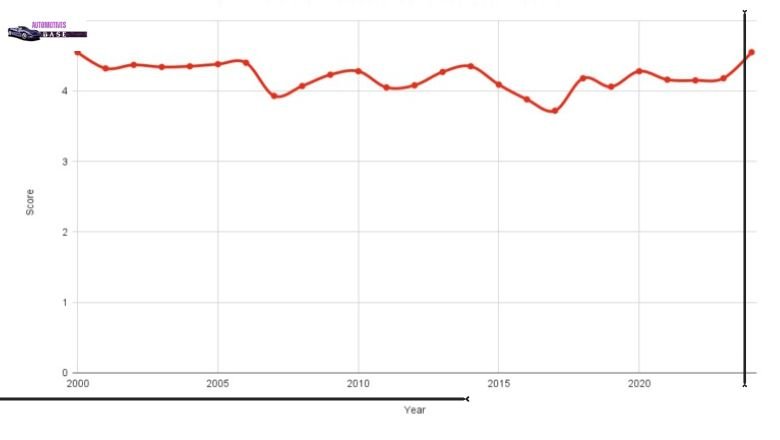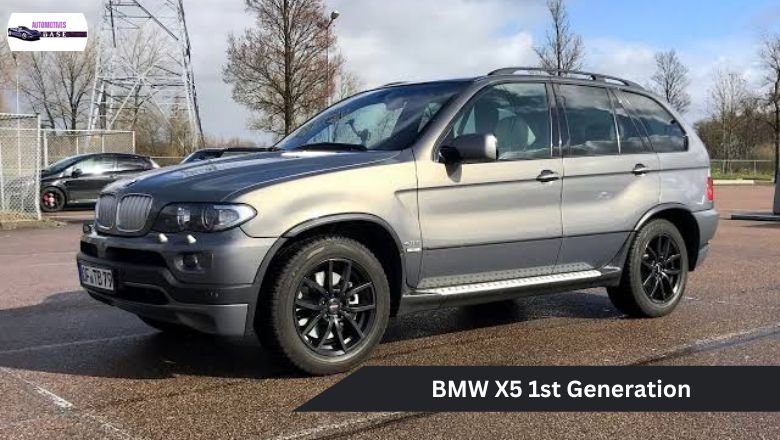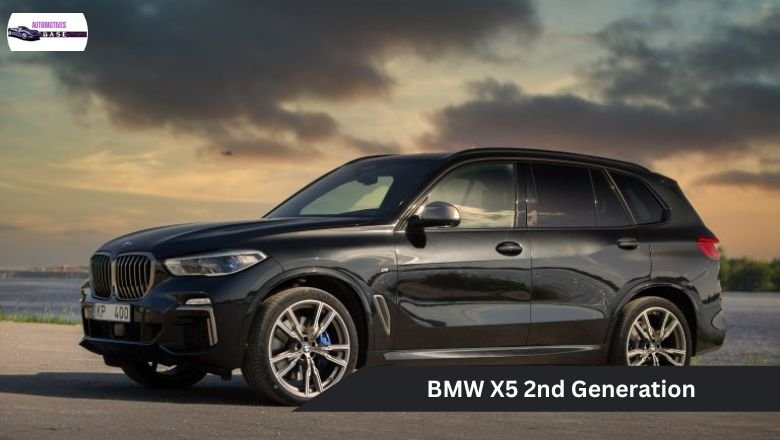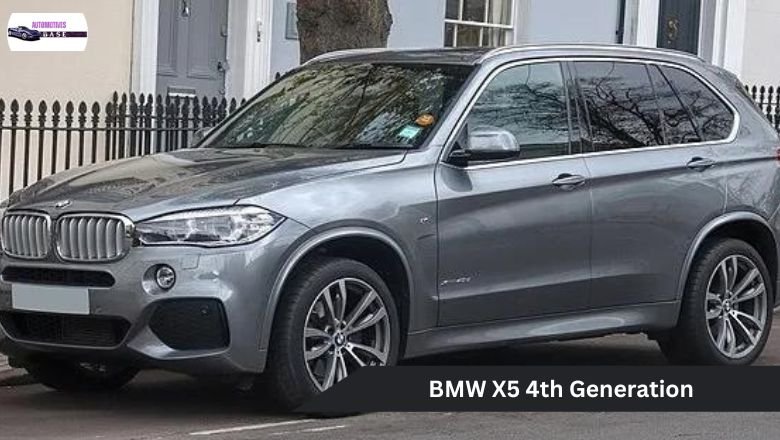The BMW X5 has been popular in the luxury SUV market for more than 20 years. It is known for its performance, style, and technology. Not all years of this model are the same. Some years had great innovations, while others had problems.
We will look at the history of the BMW X5 and see the best and worst BMW X5 years. We also look at its special qualities, like engine upgrades and safety features, as well as issues that some models had.
BMW X5 Generations
In 1999, BMW started making the X5, a fancy SUV, to get into that market. The first X5 (E53) was a big deal for BMW because it had good performance, luxury, and versatility.
It was called a Sports Activity Vehicle (SAV) because it was different from regular SUVs, with a car-like base and BMW’s famous driving style.
| Generations | Year |
|---|---|
| 1st generation (E53) | 2000-2006 |
| 2nd generation (E70) | 2007-2013 |
| 3rd generation (F15/F85) | 2014-2018 |
| 4th generation (G05/G18) | 2019-Present |
Knowing the changes between the X5 generations is key because they show improvements in technology, looks, and performance that might affect buyers’ choices.
BMW X5 Reliability By Year
We carefully evaluate the best and worst years of the BMW X5 by analyzing factors like owner-reported reliability, maintenance costs, safety ratings, Consumer Reports scores, NHTSA recalls, and ratings from various sources.

Neutral years are those that neither excel nor receive significant negative feedback, offering a balanced experience for owners.
Factors like NHTSA recalls can negatively impact a car’s reputation, with more recalls and complaints indicating lower reliability.
Best And Worst BMW X5 Years, 1st Generation (2000–2006)
In 2000, BMW entered the SUV market with the introduction of the BMW X5, a Sports Activity Vehicle (SAV) that combined the brand’s signature sporty characteristics with the practicality of a larger vehicle.
The years 2005 and 2006 stand out as prime choices for purchasing a BMW X5 from this generation.

It is advisable to steer clear of the 2001, 2003, and 2004 versions of the BMW X5 due to potential issues.
It is highly recommended to conduct thorough research and verify via VIN due to the significant number of NHTSA recalls associated with the first-generation BMW X5.
The Best Years: 2005, 2006
The 2005 and 2006 BMW X5 models were standout years with improved engines like the 3.0i inline-six, 4.4i V8, and the top-tier 4.8is V8.
These engines offered a good mix of power and fuel efficiency, with the 4.8-liter V8 getting 12 mpg in the city and 26 mpg on the highway.
The vehicles also had advanced safety features like dynamic stability control and optional adaptive headlights. The 2006 model got a small makeover for a better look.
There were recalls for the 2006 X5 due to issues with rear shock absorbers and the Occupant Detection System (ODS), including problems with the rubber mounts on the absorbers and potential defects in the ODS sensors.
The Neutral Years: 2002, 2003
The 2002 and 2003 BMW X5 models found a good balance between pros and cons. They had more trim levels and engine options, making driving more versatile.
The 2002 model had a powerful 4.6-liter V8 engine, making it a high-performance SUV. The iDrive system was introduced during this time, but some found it too complicated.
The 2003 model didn’t have any big recalls, but owners often worried about an oil separator problem that could lead to leaks and smoke from the engine.
The Worst Years: 2000, 2001, 2004
Avoid the BMW X5 models from 2000, 2001, and 2004 due to various issues. The 2000 model had problems with window regulators and windshield wipers, as well as recalls for the transmission gear position indicator switch and brake pedal arm pivot shaft.
In 2001, there was a recall for brake line chaffing. The 2004 model had recalls for battery cable connector overheating and brake vacuum pump issues, along with reports of jerky transmissions. Check the NHTSA recalls and complaints for these years.
Best And Worst BMW X5 Years, 2nd Generation (2007–2013)
The second iteration of the BMW X5 was launched in 2006 for the 2007 model year with the aim of surpassing the achievements of its forerunner.
2013 stands out as the most successful year for the BMW X5, while it is advisable to steer clear of models from 2007, 2008, 2009, 2010, and 2011.

It is important to note that second-generation BMW X5 vehicles have been subject to a significant number of recalls by the NHTSA and have received low ratings.
It is crucial to exercise extra caution when considering purchasing one. Conduct thorough research and inspections before making a decision.
The Best Years: 2013
In the lineup of BMW X5 vehicles, the 2013 model stands out as the top performer in terms of NHTSA recalls and owner complaints.
This year showcases a notable advancement in powertrain options compared to its predecessors.
The range includes upgrades such as the base 3.0L inline-six engine, the robust 4.4L V8, and a diesel option for those prioritizing torque and fuel efficiency.
Consumer Reports indicates that models from this generation boast an average fuel efficiency of 12 mpg in city driving and 25 mpg on the highway.
The Neutral Years: 2012
In 2012, the BMW X5 underwent a period of change. This model year found itself positioned between the initial struggles of the 2nd-gen models and the improvements introduced in the 2013 version.
The powertrain choices remained largely consistent with previous years but were tweaked to enhance fuel efficiency and performance.
This period also witnessed a decrease in recalls and complaints compared to earlier years within this generation.
The Worst Years: 2007, 2008, 2009, 2010, 2011
Between 2007 and 2011, BMW X5s had many problems, leading to recalls and complaints from customers. It’s best to avoid these model years.
Some issues included rear brake disc problems in the 2007 model, front driveshaft universal joint troubles in the 2008 model, and fuel pump malfunctions in the 2008 model with 6-cylinder engines.
The 2009 model had recalls for fuel filter heater and engine belt idler pulley bolt problems.
The 2010 and 2011 models still had issues like inaccurate fuel gauge readings in the 2010 model and potential power steering fluid leaks in the 2011 model. To see all recalls and complaints for these years, click the links below.
Best and Worst BMW X5 Years, 3rd Generation (2014–2018)
In 2013, BMW unveiled the third iteration of the X5, setting a new standard in design, technology, and performance for the 2014 model.

The year 2018 stands out as a standout for the BMW X5 in this generation, boasting impressive ratings.It is best to steer clear of the 2014, 2015, 2016, and 2017 models of the BMW X5.
The Best Years: 2018
The 2018 BMW X5 is known for being reliable. BMW has improved the X5 over the years, making it a more advanced SUV with the latest technology.
The 2018 model introduced new features like laser headlights, an upgraded iDrive system, and better off-road capabilities.
Customers could choose from different engine options, including a turbocharged inline-six, a twin-turbo V8, and plug-in hybrid versions.
The 2018 X5 had good fuel efficiency ratings and received high scores from Consumer Reports, J.D. Power, and Cars.com.
Safety features like forward collision warning and blind-spot detection were standard in this model.
The Worst Years: 2014, 2015, 2016, 2017
The BMW X5 models had a tough time from 2014 to 2017. In 2014, the VANOS system caused engine problems and a recall. The 2015 model had issues with airbags and fuel pumps, which were unsafe.
In 2016, there were reputation problems and issues with child seat anchors.BMW had made progress but still had recalls for transmission and rear suspension problems. In 2018, a recall showed risks with coolant mixing in some models.
Best And Worst BMW X5 Years, 4th Generation (2019–Present)
In 2018, BMW introduced the fourth iteration of the X5, setting a new standard for luxury, technology, and performance in the mid-size SUV category.

Among the years that followed, 2019, 2022, 2023, and 2024 shine as standout years for the BMW X5, while it’s recommended to steer clear of the models from 2020 and 2021 within this generation.
The Best Years: 2019, 2022, 2023, and 2024
The 2019, 2022, 2023, and maybe 2024 models of the BMW X5 are the best in the fourth generation. BMW has worked hard to make these models better.
In 2019, the BMW X5 got high ratings from VehicleHistory and Cars.com. All fourth-gen X5s got an 80 rating on J.D. Power.
BMW would have added new technology like the iDrive 7.0 system with easy controls and voice commands. They also included Apple CarPlay and Android Auto for better phone connections.
Safety was a big focus, with the 2022 model getting BMW’s Driving Assistant Professional package for semi-autonomous driving and improved lane-keeping assist.
The powertrains in these years balanced efficiency and performance well. The xDrive45e plug-in hybrid in particular was praised for its long electric range and lower emissions without losing power.
The Worst Years: 2020, 2021
The BMW X5 series had problems in the early years of the fourth generation, specifically in 2020 and 2021.
In 2020, there were concerns about the braking system malfunctioning, leading to longer stopping distances and a higher risk of accidents.
In 2021, despite some improvements like a 48-volt mild-hybrid system, issues continued. Recalls were issued for potential fuel leaks in the engine compartment, which could cause fires.
Some models also had issues with the rearview camera not showing images correctly, especially during reverse. To learn more about recalls and complaints for 2020 and 2021 BMW X5 models, check NHTSA records.
BMW X5 VS BMW X3
The BMW X5 is a mid-size luxury SUV that offers more space, making it an excellent choice for families or those who frequently carry passengers and cargo. The X5 provides a more robust driving experience, along with a higher level of luxury and comfort With its powerful engine options and advanced technology features.
The BMW X3 is a compact luxury SUV that excels in agility and maneuverability. It’s easier to handle in urban settings and offers impressive fuel efficiency compared to its larger counterpart. The X3 still provides ample room for everyday use while it may have less cargo space than the X5.
BMW X5 Average Resale Values
The graph below displays the typical resale prices of BMW X5 models across different years.

By analyzing this data, prospective buyers can gain insight into the vehicle’s depreciation rate and make informed decisions when purchasing a pre-owned model.
Conclusion
The BMW X5 has had good and bad times over the years. Some years had problems and expensive fixes, while others had better performance and technology. It’s important for buyers to research the model year they want to make a smart choice.
The best year for the BMW X5 depends on what you want.Think about the best and worst BMW X5 years before buying if you want a cheaper option or the best features. Stay safe on the road and have a great journey.
FAQs
Which Is The Most Reliable BMW X5 Year?
Many enthusiasts and experts consider the 2013 BMW X5 to be one of the more reliable model years.
Which BMW X5 Model Is Best?
The X5 lineup offers a range of options, each with its own strengths. For those looking for a balance of performance and efficiency, the BMW X5 xDrive40i with its turbocharged inline-six engine may be the ideal choice.
Which BMW X5 Is Most Fuel-Efficient?
The most fuel-efficient BMW X5 model is the X5 xDrive45e, which is a plug-in hybrid version of the popular SUV.
Which Is Better BMW X5 Or F90 M5?
The BMW X5 is a luxury SUV that is spacious, comfortable, and practical for everyday driving and family trips. The BMW F90 M5, on the other hand, is a high-performance sports sedan that is fast, powerful, and agile. Choosing between the BMW X5 and BMW F90 M5 depends on what you want.

